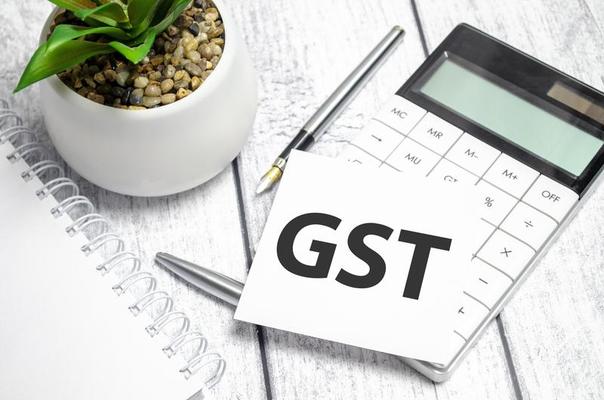Understanding Goods And Services Tax
- July 28, 2025
- Posted by: Jagadishca@25
- Categories: Business plans, Finance & accounting

Understanding Goods and Services Tax
The Goods and Services Tax (GST) remains a pivotal reform in India’s indirect tax landscape, introduced on July 1, 2017.
Introduction to GST
GST is a value-added, multi-stage, destination-based tax levied on the supply of goods and services. It replaced numerous indirect taxes, including excise duty, value-added tax (VAT), and service tax, aiming to simplify the tax structure and reduce the cascading effect of taxes. The tax is collected at each stage of the supply chain, with businesses able to claim input tax credit for taxes paid on inputs, ensuring the final consumer bears the tax burden. GST is collected from the point of consumption, not origin, aligning with destination-based taxation principles.
In India, GST was implemented following the passage of the Goods and Services Tax Act on March 29, 2017, marking a significant step toward a unified national market. The reform subsumed almost all indirect taxes except a few state taxes, such as those on petroleum products, alcoholic beverages, and electricity, which continue to be taxed separately under the previous system.
Structure and Tax Slabs
GST in India operates with a tiered structure, divided into five tax slabs to cater to different goods and services:
- 0%: Applied to essential goods like food items, ensuring affordability.
- 5%: Covers basic goods, balancing revenue and consumer impact.
- 12%: Standard rate for many goods and services.
- 18%: Applied to most goods and services, forming a significant revenue base.
- 28%: Levied on luxury goods and services, with an additional cess on sin goods like tobacco to fund specific initiatives.
Additionally, a cess is imposed on certain luxury and sin goods, such as automobiles and tobacco, to raise funds for specific purposes like health and education
Certain products are excluded from GST, including:
- Petroleum products (crude oil, petrol, diesel, aviation turbine fuel, natural gas)
- Alcoholic beverages for human consumption
- Electricity
These items are taxed separately by state governments under VAT and excise duty, maintaining the previous tax system for these categories.
Implementation and Administration
GST is administered through a dual structure in India, with Central GST (CGST) and State GST (SGST) levied on intra-state transactions, and Integrated GST (IGST) on inter-state transactions. This ensures revenue sharing between the central and state governments. The GST Council, comprising representatives from the central and state governments, decides on tax rates, exemptions, and policy matters, fostering cooperative federalism
Taxpayers must register for GST if their annual turnover exceeds a threshold (currently ₹40 lakh for goods and ₹20 lakh for services, with special rates for northeastern states). Registered businesses file periodic returns, such as GSTR-1 for outward supplies and GSTR-3B for summary returns, through the GST portal, GSTR 4 in case of business under composition.
Recent updates include:
- E-invoicing: As of August 2023, businesses with a turnover over ₹5 crore must issue e-invoices, enhancing transparency and compliance.
- 54th GST Council Meeting: Held on September 9, 2024, discussing key issues like tax rates and compliance measures, with details available at CBIC Press and Release, GST Council Meetings.
Benefits of GST
GST has several benefits, supported by economic analyses:
- Simplified Tax Structure: By replacing multiple indirect taxes, GST creates a unified tax system, reducing compliance complexity for businesses
- Reduced Tax Burden: The input tax credit mechanism mitigates the cascading effect, lowering the overall tax burden on goods and services, estimated at 25%-30% pre-GST.
- Economic Growth: GST is likely to spur economic growth by creating a common national market, making Indian products competitive domestically and internationally. Studies show increased trade volumes and improved tax compliance
- Improved Compliance: Digitalization through the GST portal and e-invoicing has widened the tax base, enhancing revenue collection for both central and state governments
Challenges and Controversies
Despite its benefits, GST faces several challenges and controversies:
- Complexity for Small Businesses: The need for regular registration, filing, and compliance can be burdensome for small and medium-sized enterprises (SMEs), with increased costs and technical barriers
- Exclusions and Dual Taxation: The exclusion of petroleum, alcohol, and electricity from GST creates a dual tax system, leading to debates on harmonization. These items continue under VAT and excise duty, complicating the tax landscape
- Implementation Issues: Initial challenges included delays in refunds, technical glitches in the GST portal, and confusion over rates, though many have been addressed over time in GST council meeting.
- Rate Rationalization Debates: Ongoing discussions in GST Council meetings, such as the 54th meeting in September 2024, highlight controversies over rate adjustments and exemptions, with stakeholders advocating for simplification.

